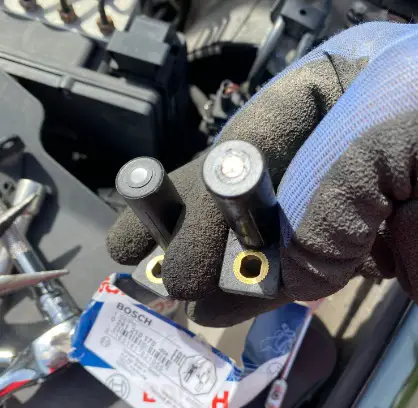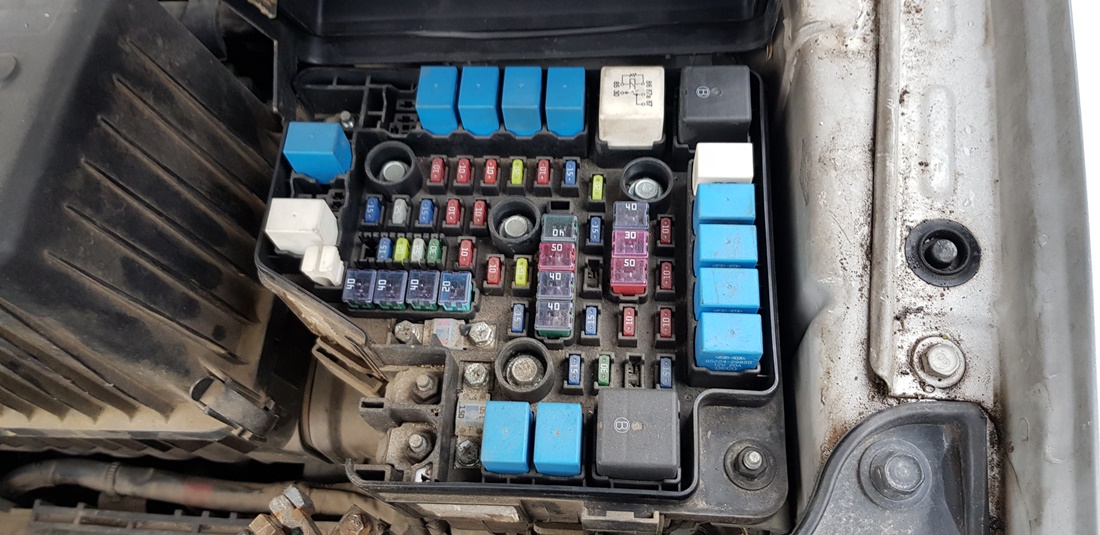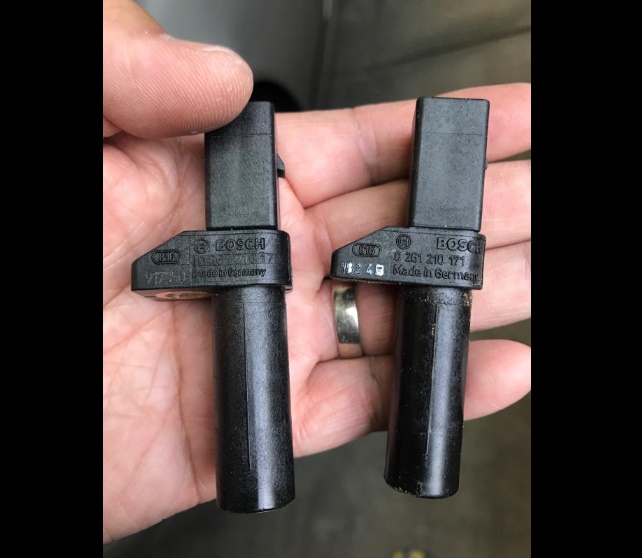One of the most important – but often overlooked – aspects of car maintenance is keeping the tie rods in good condition. Inner and outer tie rods help keep your car steered in the right direction. So, it’s important to make sure they’re both functioning properly.
However, not all inner and outer tie rods go bad at the same time. This is why many car owners wonder if they should replace both inner and outer tie rods at the same time.
In this article, I am going to talk about what is inner and outer tie rods and whether should you replace both inner and outer tie rods at the same time.
- Key Takeaway
- What Is An Inner And Outer Tie Rod?
- Should I Replace Both Inner and Outer Tie Rods?
- How Often Do Inner Tie Rods Need To Be Replaced?
- How Do You Tell If Your Tie Rods Are Going Bad?
- FAQ
- Q: How do I know if my tie rods need to be replaced?
- Q: Can I replace just one tie rod?
- Q: How much does it cost to replace tie rods?
- Q: Can I replace tie rods myself?
- Q: How long do tie rods last?
- Q: Can failing tie rods cause other problems?
- Q: How long does it take to replace tie rods?
- Q: Can I drive with worn tie rods?
- In Conclusion
Key Takeaway
- Yes, it’s advisable to replace both inner and outer tie rods together to ensure optimal vehicle alignment, handling, and safety, especially if one is already worn out or damaged.
- An inner and outer tie rod are vital components of a vehicle’s steering mechanism, with the inner tie rod connecting the steering rack to the outer tie rod, which in turn connects to the wheel assembly, allowing for the transmission of force from the steering center to the wheel, thus controlling the vehicle’s direction.
- Inner tie rods need to be replaced when they are damaged or the ball joint is worn, which can occur from heavy curbing or accidents, though the specific frequency varies based on driving conditions and vehicle use.
What Is An Inner And Outer Tie Rod?

An inner tie rod is a part of your vehicle’s steering system. It connects the steering rack to the steering knuckle on each side of the car. The outer tie rod does the same thing, but it is located on the outer end of the steering knuckle. Together, these two parts work to keep your car going straight down the road.
The inner tie rod is attached to the power steering rack body and the outer tie rod is attached to the wheel hub. The purpose of the inner and outer tie rods is to form a connection between the steering wheel and the wheels of the car. The power steering system turns in a circular motion (rotating the wheel back and forth) to a linear motion of the wheels turning left and right.
What a lot of car owners don’t know about inner and outer tie rods is the fact that wheel alignment is done by adjusting these two. As you rotate the tie rod in or out, it changes how much the front of the wheel points outward or inward.
Wheel alignment is a critical part of vehicle maintenance. Incorrect wheel alignment can cause premature tire wear, uneven brake wear, and poor handling. Wheel alignment is the process of setting the wheels of a vehicle so that they are parallel to each other and perpendicular to the ground.
Usually, when an inner or outer tie rod starts to go bad, you won’t hear any noise. The first and best tell-tale sign is when you hit a bump or a pothole, the steering wheel is going to shake more than usual. Another common sign of a bad inner and outer tie rod is uneven wear of the tires due to the car not being aligned properly.
Should I Replace Both Inner and Outer Tie Rods?

The inner and outer tie rods work together to keep the wheels of the vehicle pointed in the right direction at the right angle. Since they are connected, there is a great chance that both inner and outer tie rods will go bad at the same time.
However, even if you verify that only the inner or the outer tie rod is bad, it is still recommended that you replace both inner and outer tie rods.
An inner and outer tie rod costs about $45 and just the inner or the outer tie rod costs about half of that. However, if you replace only the inner or the outer tie rod, you will save money but you will have to get an alignment that costs about $50-$100. Now, if you only change the inner or outer tie rod, this means that the part that you didn’t change will go bad soon after. Then, again, you have to get an alignment.
Replacing both the inner and outer tie rods at the same time is economically justified because then you will only need to get a wheel alignment once and will last you for several years. On the contrary, replacing only the inner or the outer tie rod will not guarantee that the part that was not replaced will last for a few years.
To further provide a better answer, I called some of my former colleague’s mechanics. I asked them what is their practice and how they move forward with this issue. Four out of five mechanics told me that they suggest replacing both the inner and outer tie rods at the same time.
How Often Do Inner Tie Rods Need To Be Replaced?

How often inner tie rods need to be replaced depends on your car, driving habits, and road conditions. However, most mechanics agree that inner tie rods should be replaced when they go bad which is about every 50,000 miles.
The purpose of inner tie rods in vehicles is to connect the steering wheel to the road. Inner tie rods are what give your car its turning power. They are located between the outer tie rod and the steering knuckle.
The ends of the inner tie rod are attached to a sleeve, which attaches to the outer tie rod. When you turn your steering wheel, the inner tie rod pushes or pulls on the outer tie rod, which turns your wheels. This system is what allows you to steer your vehicle.
There are two types of inner tie rods: ball joint type and tapered type. Ball joint-type inner tie rods have a ball-and-socket joint at each end, while tapered-type inner tie rods have a tapered end that fits into a tapered hole in the outer tie rod.
Ball joint-type inner tie rods are more common, as they allow for smoother steering. Tapered-type inner tie rods are less common, but they offer a tighter turning radius.
If you’re not sure whether or not your inner tie rods need to be replaced, consult with a professional. They will be able to inspect your vehicle and give you a more accurate estimate. In the meantime, here are a few signs that your inner tie rods may need to be replaced:
- Excessive play on the steering wheel
- A loud clicking noise when turning the steering wheel
- Uneven tire wear
How Do You Tell If Your Tie Rods Are Going Bad?
- Uneven or premature tire wear
- Looseness in the steering wheel
- Clicking noises when turning
- Unaligned front wheels
- The wheel not responding to the steering wheel
Tie rods are an important part of the vehicle’s suspension. Like all parts, they also have a tendency to go bad at some point. But, how do you tell if your tie rods are going bad?
1. Uneven or premature tire wear

The purpose of the tie rods is to connect the steering wheel with the tire and to make sure that the tires are pointing in the right direction at the correct angle. When the tie rods get bad, the angle at which the tires are pointing can intensify.
Alignment on vehicles refers to the angle of the wheels in relation to the body of the car. This is important for several reasons. First, it affects how smoothly the car drives. Second, it can impact fuel economy.
Third, improper alignment can cause wear and tear on tires and suspension components. Finally, alignment can influence how a vehicle handles emergency situations.
Every vehicle manufacturer has a different toe, camber, or caster angle factory set on their vehicles. These angles define how the vehicle drives, how it gets into corners, fuel economy, and more. But, when the tie rods get bad, the angle at which the tires are set only increases.
Let’s say that you get a vehicle that has a slight camber angle set by the manufacturer. The positive camber angle is when the tire is slightly pointing outwards. When the tie rod gets bad, the angle increases. At this point, the camber angle can be even visible to the eyes.
So, driving with an excessive positive camber angle will cause uneven and premature wear on the tire on the outward side. This is why it is important to replace your inner and outer tie rods and get an alignment says Cars From Japan.
2. Looseness in the steering wheel

One of the first signs that your tie rods may be going bad is if your steering feels loose. If it takes more effort to turn the wheel or you feel like the car is pulling to one side, this could be a sign that your tie rods need to be replaced.
If you notice your steering wheel starting to feel loose, it could be a sign that your tie rods need to be replaced. When tie rods become worn out, they can no longer provide the necessary support to keep your wheels aligned.
This can cause your steering wheel to shake or vibrate, making it difficult to control your vehicle. Most of the time, when the tie rods go bad, they cause a sort of delay in the steering.
Tie rods don’t go bad all of a sudden. They will show some symptoms before they go bad completely. One of these signs is looseness in the steering wheel. Being the link between the steering wheel and the actual tire means that as soon as you turn the steering wheel, the tire needs to move in the right direction.
However, when the tie rod gets bad, there will be free play. This results in a sensation of looseness in the steering wheel. Meaning, that when you turn the steering wheel slightly, the tire with the bad tie rod will not respond.
3. Clicking noises when turning
If your car is making clicking noises when you turn, it’s likely due to bad tie rods. Tie rods are an important part of your suspension system. If they’re not working properly, it can cause a variety of problems. If you’re hearing clicking noises when you turn, it’s important to have your tie rods checked as soon as possible.
If you hear a knocking sound when turning or driving over bumps, this could also be a sign that your tie rods are damaged.
The clicking noises when turning come when the tie rods are bad and have metal-on-metal contact with the knuckle. Usually, tie rods go bad due to hitting too many potholes and bumps. However, the average lifespan of a tie rod is about 50,000 miles.
4. Unaligned front end

Tie rods are one of the most important parts of a vehicle’s suspension. They play a big role in how well a car handles. If tie rods are worn out or damaged, it can cause the vehicle to pull to one side. This will make it difficult to keep control of the car.
Alignment is done by adjusting the tie rods. The tie rods are part of the steering system and are responsible for transferring the force from the steering wheel to the wheels, as well as setting the tires at the proper angle.
Alignment is the process of setting the tie rods so that the vehicle’s wheels are pointing in the correct direction and at the proper angle. This includes setting the toe, camber, and caster angles. If your tie rods are going bad, the vehicle might get a toe, camber, or caster angle. This will affect the way the vehicle drives.
There are three main types of wheel alignment: toe, caster, and camber. Toe is the simplest type of alignment and only involves adjusting the angle of the wheels so that they point slightly inward or outward.
The caster involves adjusting the steering axis so that it is perpendicular to the ground. Camber involves adjusting the angle of the wheels so that they are tilted slightly inward or outward.
Each type of alignment has its own benefits and drawbacks. For example, wheel alignment can improve fuel economy but may cause the car to handle poorly in emergency situations. Caster alignment can improve handling but may cause tire wear. Toe alignment can reduce tire wear but may impact fuel economy.
5. The wheel not responding to the steering wheel
Tie rods are the link between the steering wheel and the wheel. When you turn the steering wheel, that force gets transferred through the rack and pinion into the tie rods. They respond by turning the wheel in the desired direction. The tie rods have to be in good condition in order to successfully transfer this force into the wheel.
When the tie rods go bad, there is a lot of free play. This means that you can turn your vehicle but the wheels will not respond immediately. In some cases, you will need to turn the wheel halfway in order for the wheel to start moving.
The worst scenario is that the tie rod gets completely detached from the knuckle of the wheel. In this case, no matter how much you turn the steering wheel, the tire will not respond.
FAQ
Q: How do I know if my tie rods need to be replaced?
A: There are a few signs that indicate potential tie rod issues. These include uneven tire wear, excessive play or looseness in the steering wheel, vibration or shaking while driving, and the vehicle pulling to one side. If you notice any of these symptoms, it is advisable to have your tie rods inspected by a professional.
Q: Can I replace just one tie rod?
A: While it is technically possible to replace just one tie rod if only one is damaged or worn out, it is generally recommended to replace both tie rods at the same time. This ensures that the steering system is balanced and reduces the likelihood of future issues with the other tie rod.
Q: How much does it cost to replace tie rods?
A: The cost of replacing tie rods can vary depending on the make and model of the vehicle, as well as the labor rates of the service provider. On average, the cost can range from $200 to $500 for parts and labor.
Q: Can I replace tie rods myself?
A: Replacing tie rods requires specialized tools and knowledge of the steering system. If you do not have experience working on vehicles or do not feel confident in your abilities, it is recommended to have a professional mechanic perform the replacement to ensure it is done correctly.
Q: How long do tie rods last?
A: The lifespan of tie rods can vary depending on driving conditions, the quality of the components, and maintenance practices. On average, tie rods can last between 70,000 to 100,000 miles. However, it is important to have them inspected regularly and replaced as necessary to ensure safe and efficient steering.
Q: Can failing tie rods cause other problems?
A: Yes, failing tie rods can lead to other issues with the steering and suspension system. They can cause uneven tire wear, affect the vehicle’s alignment, and potentially result in unsafe driving conditions. It is important to address tie rod issues promptly to prevent further damage or complications.
Q: How long does it take to replace tie rods?
A: The time required to replace tie rods can vary depending on the make and model of the vehicle and the experience of the mechanic. Generally, it can take around 1 to 2 hours to complete the replacement.
Q: Can I drive with worn tie rods?
A: It is not recommended to drive with worn tie rods as they can compromise the vehicle’s steering and handling. Worn or damaged tie rods can lead to loss of control, uneven tire wear, and potential accidents. If you suspect issues with your tie rods, it is best to have them inspected and replaced as necessary.
In Conclusion
In conclusion, if you’re wondering whether you should replace both inner and outer tie rods, the answer is yes.
Many experts in the field strongly recommend replacing them together, especially if one is already showing signs of wear or damage.




